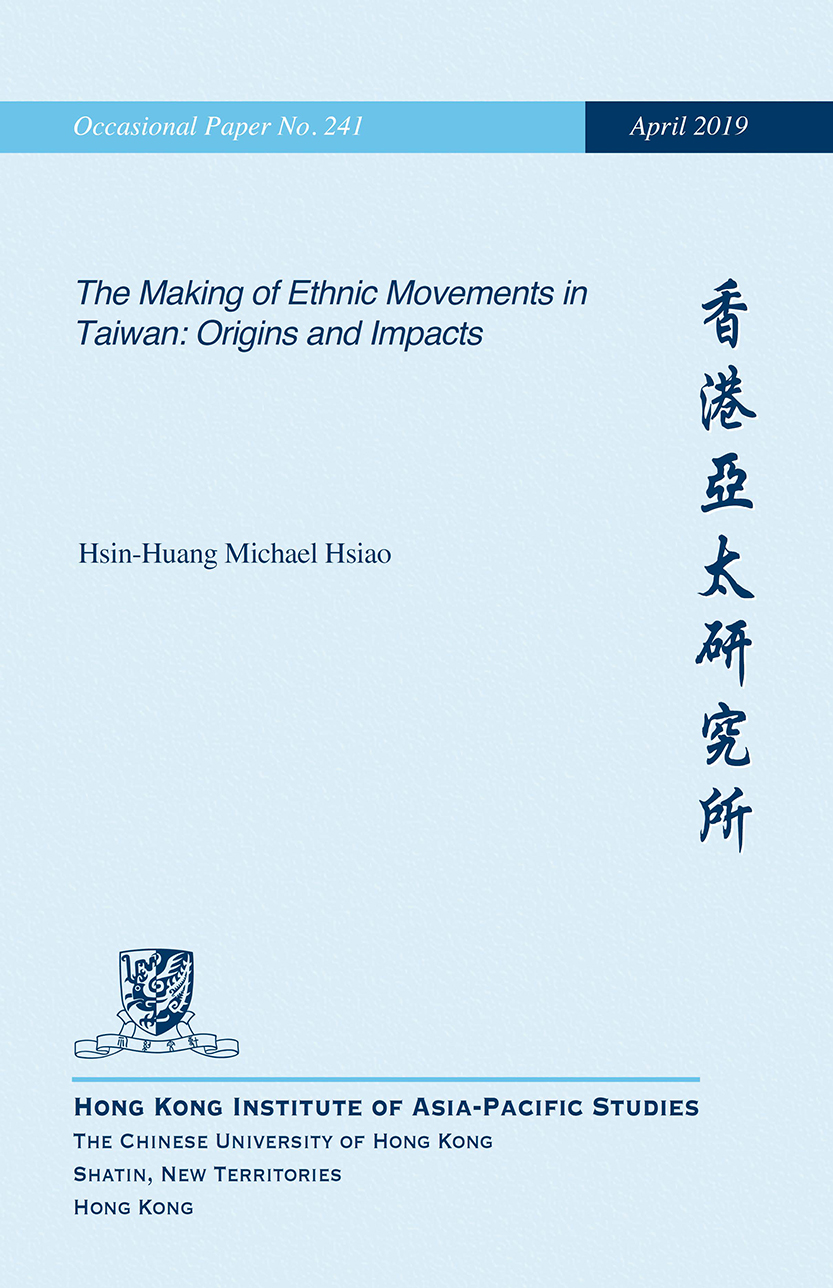HKIAPS Publications
Hsin-Huang Michael HSIAO
English/21.5 x 14 cm/paperback/ii+22 pages/published in April 2019
ISBN 978-962-441-241-3; list price: US$2.50 (HK$15.00)

Hsin-Huang Michael HSIAO
The Beginning in the 1980s, the ethnic landscape of Taiwan began to change. Democratization drastically altered the long-existing situation of “minority rule” by political elites exiled from mainland China to a situation of “majority rule”, whereby local Taiwanese were finally able to enjoy legitimate political rights and civil liberties. The definition of ethnicity was also reconceptualized. The three sociologically and anthropologically defined “ethnic minorities” were then recreated, i.e., the indigenous Austronesian peoples, the Hakka, and the new immigrants from Southeast Asia.
The period also saw the rise of ethnic movements. On the one hand, the indigenous peoples and the Hakka organized their own respective ethnic movements to demand that the government protect their ethnic rights and upgrade their position in mainstream society. On the other, Taiwan’s local civil society organizations, such as concerned non-profit organizations (NPOs) and non-governmental organizations (NGOs) assisted and protected two other new minority groups, namely, marriage and labour immigrants from Southeast Asia. Accordingly, different forms of political pressure and various policy impacts have been observed over the years: while the self-mobilized ethnic advocacy movements of the indigenous peoples and the Hakka were created to force the government to make policy changes, the service NPOs/NGOs were established to help marriage and labour immigrants mostly operate under existing government policies and regulations.
The Taiwan experience, as judged by the ethnic movements of the indigenous peoples and the Hakka, has proven that only when minority groups mobilize themselves are they able to eventually push the state into making necessary concessions and policy changes.
台灣的族群運動:起源與影響
蕭新煌
自一九八○年代台灣進入政治自由化和民主化後,族群政治權力結構也發生本質的改變,亦即從「少數統治」蛻變為「多數統治」。接着「族群」也有了新的定義,不再以政治化的「省籍」來劃分,回歸到種族、語言、文化特色的差異。
來自中國大陸的少數外省政治行政軍事菁英不再主宰和統治台灣,結束了所謂的「少數統治」。真正的台灣三支「少數族群」也從此以社會文化的形態出現,那就是南島原住民族、客家和東南亞新移民。
本文即在探討這三支少數族群自一九八○年代以來所進行的兩類族群運動。一類是自行動員和自我組織化的原住民運動和客家運動;另一類是由台灣本土公民社會團體和非政府組織發起的為東南亞新移民(婚姻移民和外籍勞工)代言服務的運動。
本文分別就這三種族群運動的動員方式、資源結構、政治壓力和政策影響加以分析。本文以台灣經驗證實唯有能力採取自我組織動員策略的族群運動,才能真正發揮有效和積極的政策效應。在理論上的意義也是符合了「資源動員論」的解釋和論述命題。
